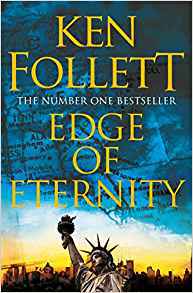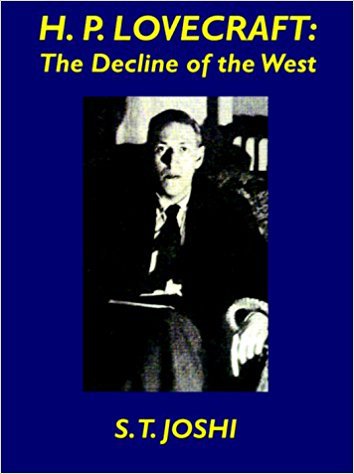
I first met Sue Grafton in 1991. I was in the States for the publication of the third Charlie Resnick novel, Cutting Edge, and my US publisher, Henry Holt, had brought me over for a small tour which, best as I recall, began in Minneapolis-St.Paul and continued from there down to California – specifically the annual Bouchercon mystery and detective convention, which was being held that year in Pasadena. The convention is a huge affair, crowded with fans, readers and collectors and just about, or so it seemed then, every English-speaking crime writer alive and kicking. To say I felt a little out of my league would be no exaggeration. I still hadn’t quite recovered from my first book reading & signing on the road just a week or so before, at an independent bookstore in St. Paul where the proprietor had laid on crackers and specially purchased cheddar cheese in my honour, and to which nobody – nobody – came.
Sue Grafton to the rescue. As chance would have it, we shared not just the same publisher but the same publicist, Lottchen Shivers. Lottchen had been the driving force behind the successful campaigns to promote Sue’s books and had promised to do the same for me. [The fact that she never really made it was not through lack of trying.] Once Lottchen had brought us together at Pasadena, Sue became my number one supporter, going out of her way not merely to introduce me to the audience at one of her crowded solo sessions, but to tell everyone how good the Resnick books were and that they should read them forthwith. She even managed to keep my spirits up later, when I sat stranded between her and Walter Mosely in the signing room, my grand tally of four or five customers dwarfed by Sue’s and Walter’s lines which snaked around the room and back out through the door.
She continued to be gracious and funny – and supportive – each time our paths crossed: once, memorably, in the States when she invited me to join Julie Smith, Linda Barnes and herself for dinner – I made the mistake, near fatal for my bank account, of offering to pay for the wine – and in London in 2008 when she was here to accept the CWA Diamond Dagger for Sustained Excellence in the Genre, and my partner, Sarah, and I had dinner with Sue and her husband, Steve Humphrey.
I’m sure there must have been times when she cursed herself for setting out on the millstone of a writing journey that would take her and her protagonist, Kinsey Millhone, from A is for Alibi and B is for Burglar, on through the alphabet towards X, Y and Z. As we now know, all too sadly she was not to reach Z. Y is for Yesterday will be the last. But for every curse, every moment of regret, I’m sure there were far more cherished moments of accomplishment and delight. Sue, I think, was one of those authors who genuinely welcomed and enjoyed the relationship she had with her readers, to whom she felt a sense of responsibility – just as she did, I’m sure, towards her editor through all those books, all those years, Marian Wood.
It was my very good fortune to have Marian as my editor too, in the US, at least; fortunate both for the unstinting way in which she promoted my work within the publishing house, and for the very hands-on way in which she helped to guide the Resnick books – and me with them – towards a greater maturity. She was only too aware of the power that having Sue as one of her authors gave her; as she said to me on more than one occasion, and I’m paraphrasing slightly, it’s because of Sue that I can continue to publish writers I admire like you and Daniel Woodrell, even though your sales are sadly unlikely to trouble the Best Seller lists overmuch. When Marian left Henry Holt for Putnam and took Sue with her, it wasn’t long before both Dan and myself were cut loose and, as they used to say of big band musicians, pursuing our freelance connections until another offer came our way.
Sue’s success was grounded in years of hard work in the television industry, writing scripts for series such as Rhoda, learning the art and craft of shaping and telling a story, the skill of earning the viewer’s, the reader’s, attention and sympathy. The Kinsey Millhone novels managed to straddle the wide and, for some, uncrossable lines of the comfortable and cosy crime novel and the more hard-hitting and contemporary urban thriller. And in Kinsey, Sue had created a character readers liked, felt close to, were only too happy to welcome back into their lives.
The initial success of the series was helped by being part of a quite spectacular surge in the early 1980s in America in the popularity of crime fiction written by women, usually with female leading characters. [Absurd as it sounds now, when, at this time, I was looking for a paperback publisher for the Resnick books in the US, I was told by one publisher they weren’t taking on any new male writers but if I’d like to consider using a female pseudonym … ] The first of Marcia Muller’s Sharon McCone books had been published in 1977, the second, Ask the Cards a Question, in 1982, the same year as A is for Alibi. That same year saw the publication of Sarah Paretsky’s first VI Warshawski novel, Indemnity Only. And it was more than a passing trend. Linda Barnes’s first Carlotta Carlyle novel, A Trouble of Fools, followed in 1987, and Julie Smith won the Edgar for Best Novel with the first Skip Langdon, New Orleans Mourning, in 1991.
Of those and other women crime writers whose careers began at a similar time, it is probably the more overtly political and feminist Sarah Paretsky and Sue Grafton who have been the most consistent and are the best-known, the best regarded. Sue’s family and her publisher have made it clear that what would have been the final book in the series, Z is for Zero, will remain unwritten. No ghosts by request.

Advertisements Share this:
- More





